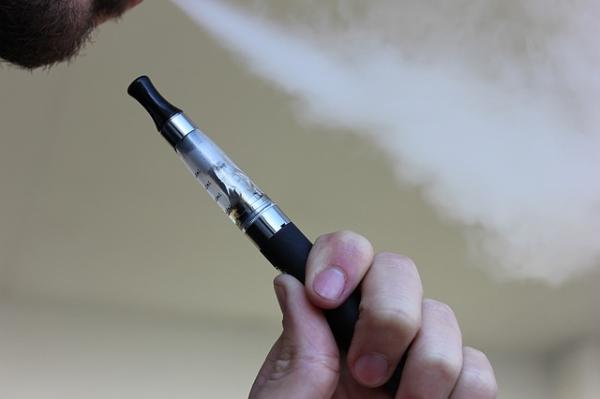Everyone agrees smoking is bad these days but how to end it has become its own cultural war, and the warring sides have come down along predictable lines. Some believe in abstinence only, some only think there should be products that are for quitting (cessation) while some believe smokers should have options for that which can also help with harm reduction while they quit. Like other cultural wars related to science and health, the sides can now be predicted politically.
It's also no surprise that one side of the culture war has flipped the narrative and declared that smoking cessation and harm reduction using e-cigarettes ("vaping") don't do anything of the kind, they instead create nicotine addiction - just like cigarettes. Even if there is no nicotine. San Francisco banned all flavored tobacco products earlier this month, and Measure E was claimed to be going after menthol cigarettes and vaping in kids, but U.C. San Francisco is also the home of the anti-e-cigarette community. Professor Stan Glantz has received generous funding from pharmaceutical groups to bolsters nicotine patches and gums and they are opposed to vaping. To stop this perceived gateway to smoking, San Francisco recently banned all tobacco flavors. The science is complex, which is why there is so much room for each side to claim harm or no harm.
So let's take a look. First, these flavorings are harmless - in food, but the authors of a new paper are looking for cardiovascular effects of flavors. Should there be any? Perhaps. Coffee is not inhaled but it still has some cardiovascular effect, because of the presence of caffeine. However, as we say in science and medicine, 'the presence of a pathogen does not equal pathology' so the dose really will make the poison here. Lawyers for food trial groups like Center for Science in the Public Interest (CSPI) spent decades insisting coffee caused breast cancer using that kind of 'a trace level is equal to a high level' u-shaped curve to no effect.
To determine if there is concern, they focus on the cellular lining of our blood vessels, vascular endothelium, the cells that interact the most with compounds in our blood. These cells release chemical signals, cytokines, eliciting an inflammatory response and nitric oxide, a chemical causing blood vessels to dilate, a sign of health.
- The vascular endothelium of cigarette smokers shows impaired nitric oxide response when stimulated [1]; with no difference in the cellular reaction between those smoking menthol flavored and non-menthol flavored cigarettes, presumably “because of the overwhelming toxicity of the many components of tobacco smoke that are already maximally impairing nitric oxide bioavailability.”
- Testing the vascular endothelium of non-smokers with menthol and eugenol (a naturally occurring essential oil that imparts flavors of clove or nutmeg) also impaired nitric oxide production
- Based on these exploratory findings, nine flavorings were tested against commercially available cell cultures of human endothelial cells from the aortic wall, our largest artery. The flavors, in their liquid form bathed endothelial cells for 90 minutes.
- Four flavorings [2] demonstrated release of cytokines associated with inflammation at the lowest concentrations tested.
- Three flavorings were vaporized at two different temperatures to simulate vaporization and hopefully capture vaporization products. The effect on nitric oxide production was mixed. Menthol showed no effect; eugenol demonstrated decreased nitric oxide production at both temperatures and vanillin demonstrated changes only at the lower temperature (a temperature more consistent with commercially available vape pens)
They concluded, “that acute exposure to flavoring additives used in tobacco products induce characteristics of endothelial dysfunction at potentially physiologically relevant concentrations.” [Italics added] And that “heating or combustion of the flavoring compounds likely alters the compounds, making them more or less toxic.”
So you see we have a defiance of solid science in claiming that the presence of any pathogen is equal to a pathological outcome. The study is also beset by small sample size, acute changes are not necessarily chronic changes, and the findings are based primarily on liquids, not vaporized products.
They acknowledge this dose-response effect weakness, though it is unlikely to make its way into mainstream media. “We still don’t know what concentrations of the flavorings make it inside the body.”
NOTES:
[1] They were stimulated by addition of an agent that increased the permeability of cell membranes to calcium, a standard assay.
[2] Vanillin, cinnamaldehyde, eugenol, and acetylpyridine (imparts a burnt flavor)
[3] Vanillin, eugenol, and menthol




